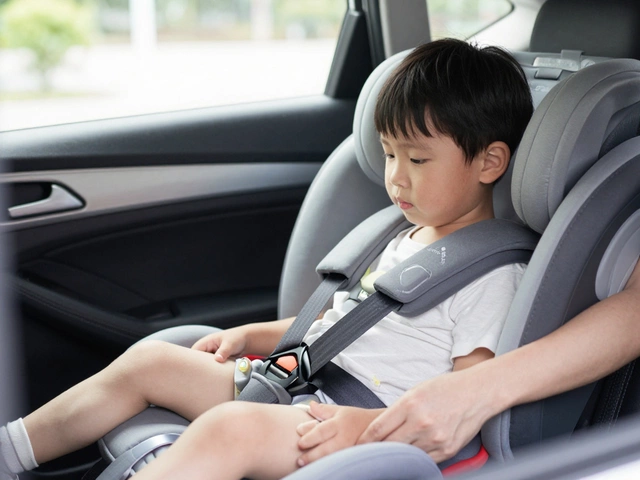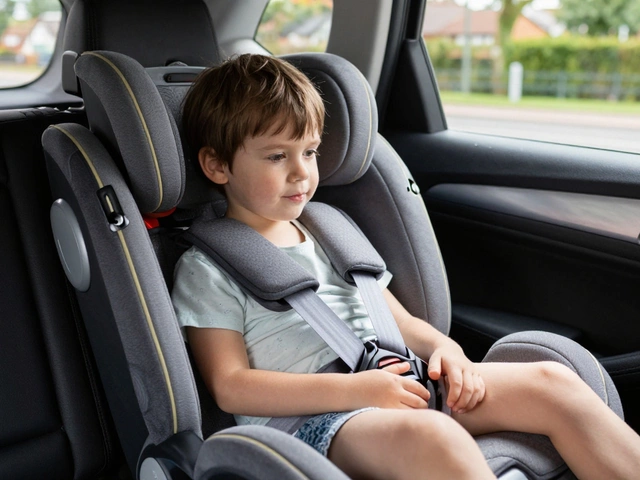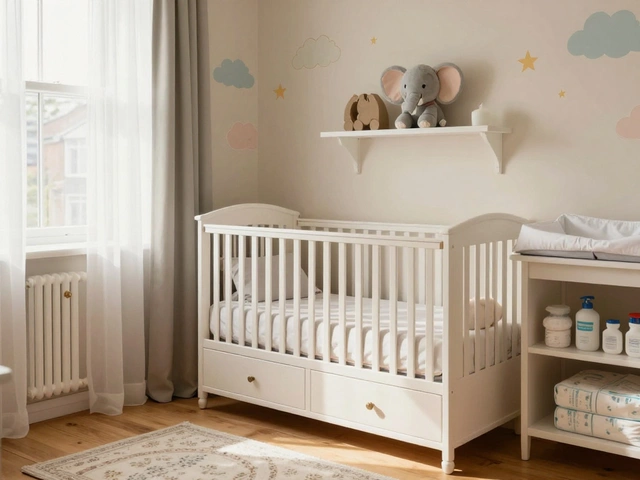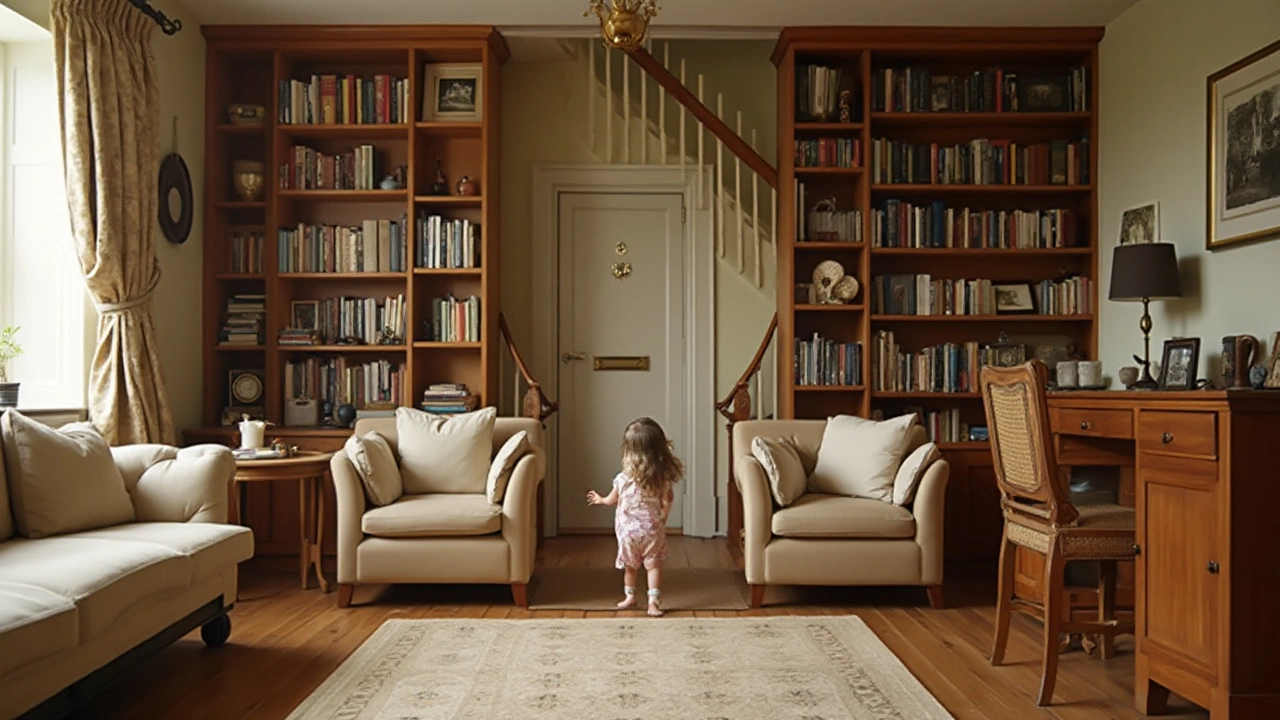
Creating a safe space for children to play and explore is a top priority for every parent. While baby gates are commonly used to keep little ones from wandering into danger zones, they aren't suitable for every home. Sometimes, they clash with interior decor or simply aren't feasible due to layout constraints. Fortunately, there are numerous alternatives to consider that can offer both safety and style.
Understanding the different ways to navigate child-proofing your living space beyond the conventional can open a world of possibilities. Whether you're dealing with open floor plans or just can't bear the thought of drilling into your walls, this guide brings you insights and ideas that might just perfectly fit your needs.
- The Drawbacks of Traditional Baby Gates
- Furniture Arrangement and DIY Solutions
- Technology and Gadgets for Child Safety
- Flexible Room Dividers
- Training and Supervision Strategies
- Choosing the Best Alternative for Your Home
The Drawbacks of Traditional Baby Gates
When it comes to safeguarding little adventurers, traditional baby gates have long been the staple in household child safety solutions. However, these once-innovative barriers come with their fair share of limitations that can spark frustration for modern parents. First and foremost, many baby gates require drilling into walls or banisters, potentially damaging your home's delicate surfaces or intricate carpentry. This can be particularly troubling for renters who wish to avoid leaving a lasting mark on the property.
Traditional baby gates also pose challenges in terms of aesthetics and space. They are often bulky, with some designs clashing terribly with subtle home decor, turning your living space into a mismatched safety zone. For families residing in homes with open floor plans, the gates can introduce awkward partitions that restrict movement rather than thoughtfully optimize it. Additionally, navigating through them with arms full or managing to unlock them while balancing a child can be cumbersome and inconvenient.
Safety Concerns and Practical Limitations
A major concern with traditional baby gates is their potential for creating additional safety hazards. A gate that's not installed properly can become a tripping hazard for both children and adults. The urge for
Furniture Arrangement and DIY Solutions
Keeping curious toddlers away from potentially hazardous areas of your home doesn't always have to involve conventional gates. A clever alternative can be rearranging your existing furniture to create a natural barrier. This is particularly effective in open-plan spaces where standard gates might not fit or would disrupt the aesthetic. Consider utilizing taller pieces like bookshelves or couches strategically to cordon off areas. It's an economical approach, making use of what you already own, and it can engage your creativity in home decor.
It's important to ensure that any furniture used as a barrier is stable and not prone to tipping over, especially when little hands are involved. Securing larger items to the wall can add an extra layer of safety, preventing movement if a child leans or pulls on them. Combining these barriers with smaller items like ottomans and footstools can efficiently block off entrances to rooms or particular sections of the garden and yard, all while maintaining a seamless flow in your home. A well-placed indoor plant display, or even a decorative screen, could add beauty while doubling as a barricade to redirect wandering feet.
For the DIY enthusiast, creating custom solutions can be both fun and effective. Building your own child-proofing barriers allows you to tailor them to your child's needs and your home's unique layout. The internet is brimming with tutorials on how to build customized wooden gates or barriers. Using smooth, untreated wood can ensure safety, and adding playful designs or color can make these barriers a part of your home decor rather than an eyesore. A popular project involves using PVC pipes to assemble a lightweight, easily movable fence that can section off dangerous areas like staircases or kitchens.
Many parents have found success in using simple tension rods with fabric curtains that can easily be installed and removed without causing any damage. This concept allows for creating temporary rooms or blocking access during specific times of the day. Child safety doesn't have to be about bulky objects obstructing your living spaces; it can be a part of your design narrative. A creative solution not only acts as a barrier but adds to the intimate and warm atmosphere of your home.
An inventive solution mentioned by Parent magazine suggests using pool noodles cut to size and placed under the edges of area rugs to stop them from folding or becoming trip hazards. This method might not work in every scenario but highlights the innovative spirit in home safety solutions. Similarly, using removable wall decals can create 'no-entry' zones for your child's play areas. These visual cues can be an effective way of teaching young children about boundaries without the need for physical barriers.
"Creativity is key in child-proofing," noted Design Mum CEO Lucy Wagner, "embracing your creativity provides a safe environment that remains true to the home's essence."
Whether employing furniture arrangement or taking on a DIY project, it's vital to ensure all methods are safe and secure, always staying one step ahead of a child's constant curiosity. By considering these innovative solutions, you not only achieve home safety but also foster an environment that is both livable and stylishly modern.
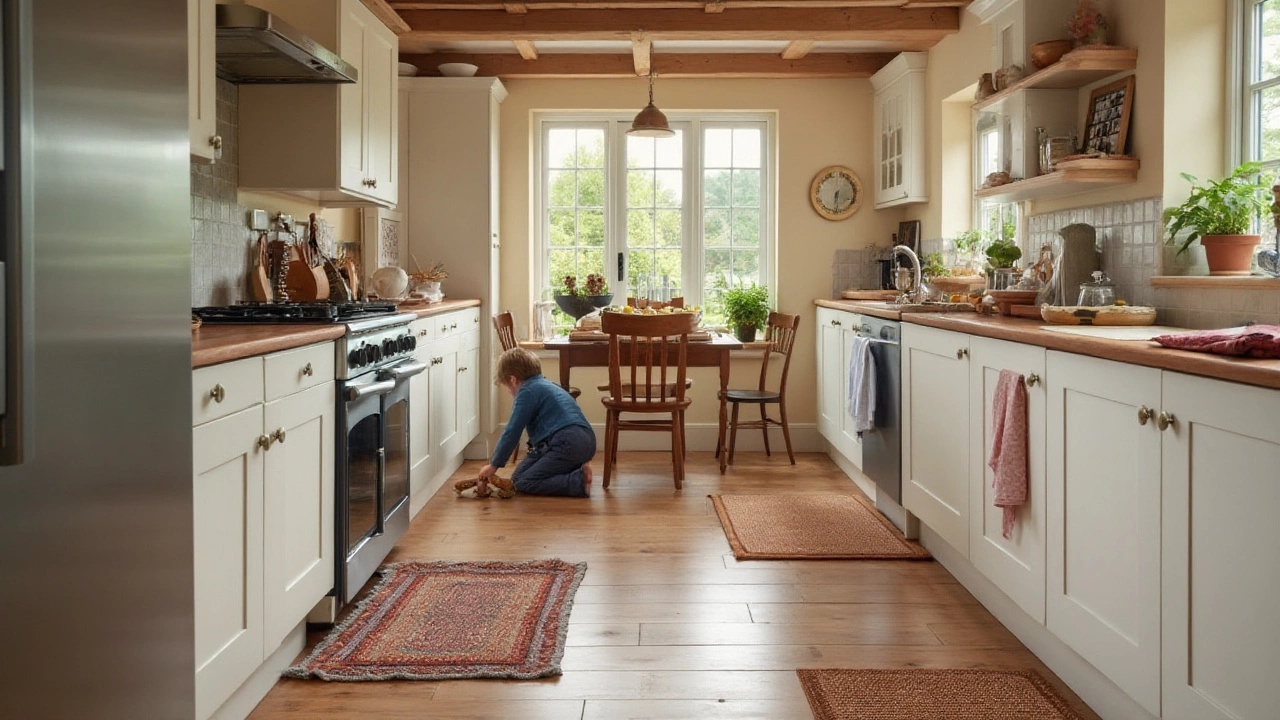
Technology and Gadgets for Child Safety
In the age of smart homes, the realm of child safety has evolved remarkably with the introduction of innovative technology and gadgets. Traditional child safety methods are being complemented, and in some cases replaced, by smart solutions that bring peace of mind to parents. With devices ranging from high-tech monitors to automatic alarms, these gadgets offer advanced protection tailored to modern living. The market is abundant with child-proofing tech, making it crucial to know what's worth investing in for keeping your little one secure in an increasingly connected world.
Popular smart options include Wi-Fi-enabled baby monitors that not only let you see and hear your child but also notify you of any unusual sounds or movements. In addition, smart door and window sensors are available, allowing parents to receive alerts directly on their phones if a door is opened. These tools are ideal for mitigating risks in busy households or homes with multiple entry points. For families with an adventurous toddler, installing motion-sensor cameras may help you keep track of their movements with ease, providing a comprehensive view and a real-time feed of your home.
In addition to video surveillance, wearable technology is gaining traction. Devices such as GPS-equipped bracelets or anklets track your child's location inside or outside the home. Such tools are especially useful during outings to crowded places where it's easy for children to wander off. Moreover, these gadgets often come integrated with geofencing features; however, consider discussing the balance of privacy and safety within your family before implementing them. As technology advances, so do its applications for home safety, providing parents with the security and flexibility needed to manage the unpredictable nature of parenting.
According to a study published in the Journal of Pediatric Health, “The adoption of smart home devices can significantly reduce accidental injuries among young children by enabling real-time monitoring and prompt responses.”
Importantly, many apps are designed to synchronize with these devices, creating a centralized hub for all safety alerts and smart technology settings. This integration enables seamless monitoring and control, ensuring that guardians can quickly respond to any potential threats in the domestic environment. Moreover, if you're considering investment in smart home technology for child safety, examine features like remote access, lifespan, and battery life to choose technology that best aligns with your family's requirements. Finally, while technology offers marvelous solutions, it is imperative to couple these advancements with traditional vigilance and attentiveness to fully ensure the child safety of the little ones.
Flexible Room Dividers
When seeking alternatives to traditional baby gates, flexible room dividers present a stylish and functional option for child safety. These dividers can be adjusted to fit various spaces, offering a versatile solution to keep children away from potential hazards like kitchens or staircases. They aren't just barriers; they add a touch of elegance to the home, integrating seamlessly with decor styles. Often available in a range of materials like wood, fabric, and plastic, room dividers allow for creativity in how they match your interior while performing their duty of keeping rooms safe for young ones.
One practical advantage of flexible room dividers is their portability. Unlike fixed gates, these can be moved with relative ease, enabling you to change your house's layout without hassle. This not only offers convenience but also ensures that as your child grows and their needs change, so too can your approach to home safety. They fold or expand as necessary, making them ideal for adapting to different areas within the household, whether it is creating a safe play zone in the living room or sectioning off potential danger areas.
Moreover, these dividers can be used in creative ways to enhance home safety. For example, by placing a divider with transparent panels, you maintain visibility while establishing a boundary. This allows parents to keep an eye on their children from a distance, offering peace of mind without sacrificing supervision. Such innovation in design means you can protect your child without feeling like you're living in a fortress. A simple search can yield dozens of elegant options that cater to diverse tastes and preferences, making it easy to find one that suits your home's aesthetic.
Flexible room dividers also encourage open space designs, a boon for modern living arrangements. In homes with open floor plans, dividers can create defined areas without closing off the space completely. This subtle navigation of boundaries not only benefits the safety of children but adds an element of personalization to your home. As cited in an article from 'Architecture Digest', "Well-chosen room dividers can seamlessly blend form and function, achieving a coexistence of safety and style."
For those looking to DIY their own solutions, consider using adjustable curtain systems or a series of aesthetically pleasing bookcases. These can act as dividers while serving dual purposes, such as storage or additional room separation. It's this ingenuity and resourcefulness that can often meet the complex needs of a household with young children. While traditional baby gates serve a specific function, flexible room dividers offer a broader scope for craftiness and individual expression, ensuring both safety and satisfaction for your family.
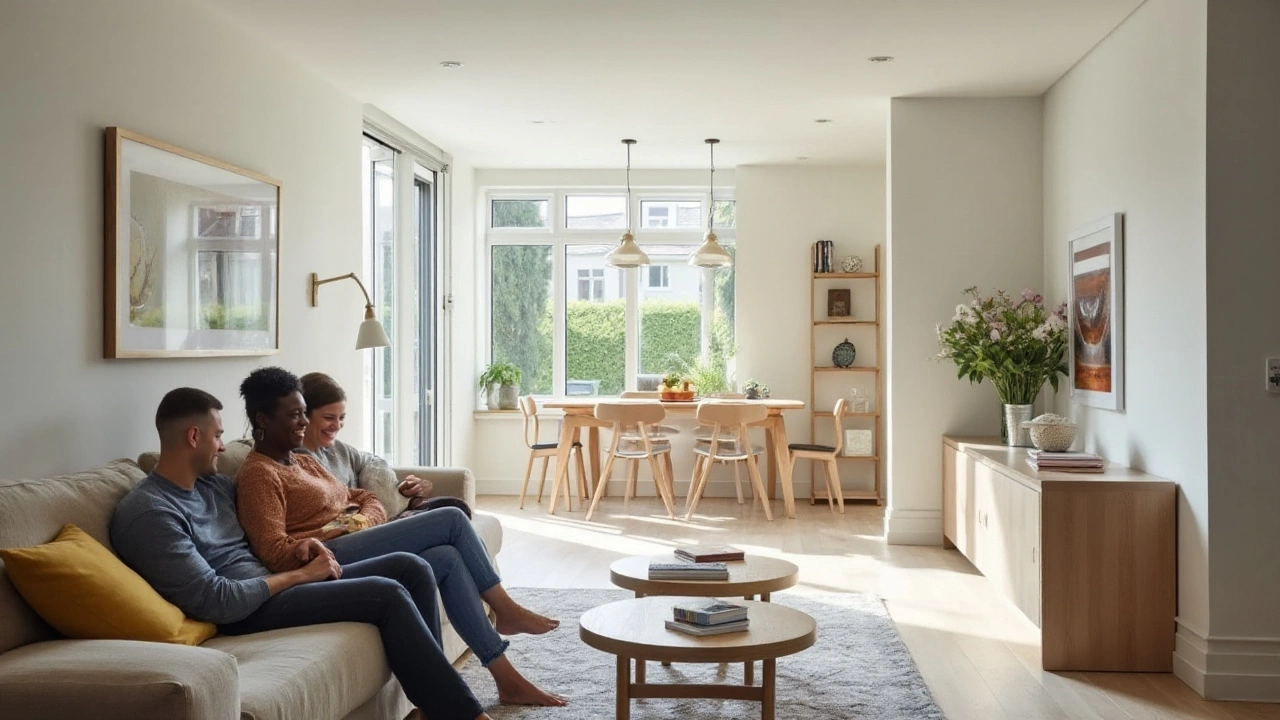
Training and Supervision Strategies
When considering alternatives to traditional baby gates, it is vital to look at how proactive child safety training and supervision play a fundamental role in maintaining a secure environment. Parents often underestimate the extent to which young minds can learn and be guided towards safer habits. This is where training comes in, equipping children with the understanding of potential hazards and teaching them how to navigate different situations safely. Initiate simple exercises at home by demonstrating what is safe and what isn't, turning learning into a daily interaction. For instance, guiding a curious toddler to avoid opening certain cabinets by showing them a different cabinet that contains their toys. This approach fosters an understanding of boundaries without physical barriers.
Supervision, on the other hand, is about being present and aware of your child’s activities. It's not just about watching, but observing actively and engaging with your child’s environment. By being alert, parents can prevent accidents before they happen and provide immediate feedback when the child's curiosity leads them astray. While supervision is intensive, it becomes a rewarding practice as you catch more teachable moments. Famous pediatrician Dr. T. Berry Brazelton once emphasized,
"The best equipment you can have for children is a caring, engaged adult."
There is indeed a balance to be struck between hovering and allowing for safe exploration, and this balance changes as your child grows. For newborns and non-crawlers, supervision might mean listening for sounds of discomfort or distress, while for toddlers, it involves a more hands-on approach. Crafting a comfortable yet stimulating play area within line of sight, but out of direct harm's way, is one strategic method to ensure home safety. Consistency and patience are key components in teaching your child what areas in the home are safe zones for play and discovery.
Also, establishing a daily routine can enhance both training and supervision by instilling predictability and a structured environment. Children thrive in environments where they know what to expect next, reducing their impulse to wander into off-limit areas. Dialogue is equally significant; consistent verbal cues and explanations coax children into understanding their proximal space and roles within it. Encouraging older siblings to participate in training younger ones can be beneficial too, fostering responsibility while further embedding the safety culture within the household.
For parents who embrace technology, there are a plethora of apps that help monitor children remotely and educate them through engaging safety games and activities. However, nothing replaces traditional, attentive parenting. Combining human engagement with technological aids can provide a comprehensive safety net, but always remember the foundations of child safety rest upon attentive supervision and proactive teaching.
Choosing the Best Alternative for Your Home
When considering child safety options beyond the standard baby gates, it's important to evaluate the unique aspects of your home. The ideal solution will depend on a blend of factors like architectural layout, aesthetic preferences, and the specific needs of your little explorer. Open floor plans, for instance, may beg for solutions other than gates, which could end up splitting the space awkwardly. Instead, clever arrangement of furniture can create natural boundaries or play zones, like using a bookshelf or a large sofa as a divider. This not only utilizes existing furnishings but seamlessly merges safety with style.
For tech-savvy parents, the integration of smart home devices designed for child safety might be an exciting avenue to explore. Motion sensors can alert you when a toddler enters a restricted area, offering peace of mind and reducing reliance on visual barriers. Some systems can even connect to your smartphone, providing real-time updates on your child's locations within the home. These tech solutions, while initially requiring a higher setup cost, offer long-term benefits by adapting to your child’s growing needs. A study from the Consumer Electronics Association indicated that smart home technology would become more prevalent in child safety, stating that 63% of new parents are likely to consider technology-driven solutions.
"Technology should be a complement to—not a replacement for—parental supervision. But when used correctly, it can be a game-changer in enhancing home safety," says Sarah Finch, a renowned child safety consultant.
If gadgetry isn't your preference, flexible room dividers can act as a stylish yet functional substitute to traditional gates. They come in a wide variety of designs and materials, from wood to fabric, providing both aesthetic appeal and utility. Unlike fixed gates, these dividers can be easily moved, offering adaptability in settings where permanence isn't an option. As these dividers rarely require installation, they’re particularly suitable for renters who wish to avoid drilling holes in walls.
A critical component in selecting alternatives is active child training and supervision. Teaching children to recognize danger zones is a proactive approach that empowers them. This includes simple commands, establishing boundaries, and positive reinforcement when they avoid off-limits areas. By instilling awareness early on, children learn to navigate spaces responsibly. This could be complemented by the presence of a designated play zone filled with engaging activities to naturally keep your child occupied within safe perimeters.
When weighing your options, take into account both the short-term and long-term needs of your family. Will the chosen method grow with your family? How does it blend with your home environment? Balancing these considerations can help in making a decision that offers both effective child safety and harmony with your living style. For some, a combination of these methods ensures that their homes remain both secure and inviting, all without a gate in sight.


